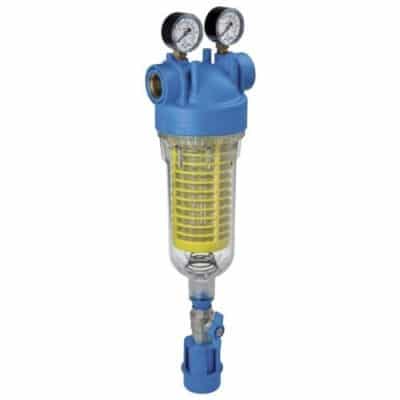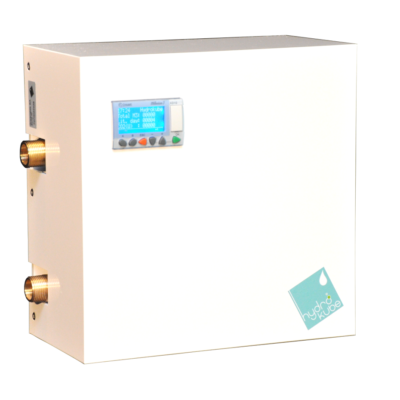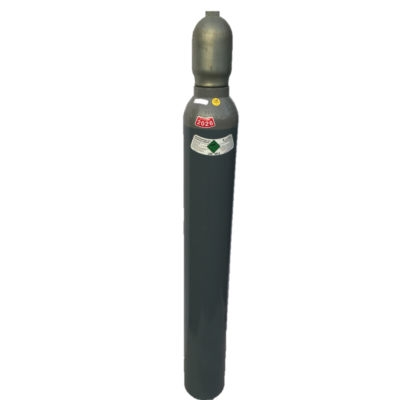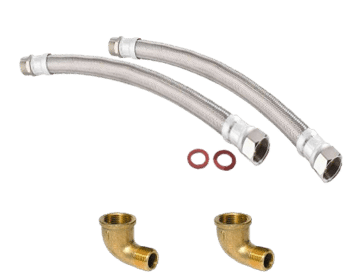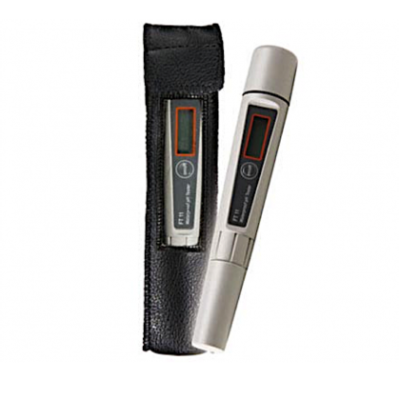What is Water Hardness?
Water hardness corresponds to the concentration of magnesium and calcium contained in the water. The concentration is measured by what is called the hydrotimetric title (TH). This hydrotimetric title is expressed either in French degrees and is represented by the symbol °f or °fH. It should be known that 1 °f corresponds to:
- 4 mg/l of calcium
- 2.43 mg/l of magnesium
- 10 mg/l of calcium carbonate
When water is said to be “hard”, it means that it contains a high level of magnesium salts and calcium salts. If the water has the necessary reactants, these salts crystallize and form hard, compact residues, commonly called “limescale” or “scale”. Therefore, water with a hardness of 30 °f has 120 mg/l of calcium or 72.9 mg/l of magnesium and much more limescale. It has 300 mg/l of calcium carbonate or limescale!
What is the Link Between Limescale and Hardness
There’s a link, of course. To understand the link, we must first understand what limescale is.
Limescale is calcium carbonate (CaCO3) plus magnesium carbonate (MgCO3). In chemical terms, it’s a mixture of calcium ion (Ca++) and carbonate ion with carbon oxide (CO—). The final molecule is thus composed of calcium ions (positively charged) and carbonate ions (negatively charged) to form CaCO3. Magnesium is present in smaller quantities and, for simplicity’s sake, is often omitted from explanations.
Hardness therefore corresponds to the water’s content of calcium and magnesium. Consequently, the more it contains, the harder it is said to be. Tap water generally has a lot of calcium and little CO2. The water will be calcareous and can scale your home. But this water can be hard without being scaling in nature! Indeed, if the water is rich in CO2, the water will tend to dissolve the limescale to transform it into bicarbonate. In this case, the water hardness measurement will not be representative of the water’s scaling character! It will simply be an indication of the presence of calcium and magnesium in the water (See the explanation in ‘How can CO2 help combat limescale?’)
What is the Hardness of My Water?
If you observe whitish, encrusted traces in the kettle, on dishes and sanitary equipment, or if soap lathers poorly, skin is dry after showering, laundry remains stiff or hard,… then it is very likely that your water is hard.
It should be known that in Belgium, most tap water is hard. This degree can vary considerably depending on location. And you can consult online the results of official analyses carried out by water distributors such as Vivaqua, IBWE, De Watergroep or on your water bill.
Also, it is possible to find kits designed to measure water hardness. These kits are available in aquarium stores, DIY stores, or online.
Combating Limescale?
Chemical water softeners are an increasingly popular effective method of water treatment. While some still turn to traditional salt models today, know that there is a new generation of devices using CO2 injection. Moreover, they are ecological, economical, and just as, if not more effective than traditional water softeners. (See the explanation in ‘How can CO2 help combat limescale?’)
Salt or CO2?
Salt treatment,
The very first solution, invented over 80 years ago. The treatment proceeds by replacing calcium and magnesium with sodium. Thus, calcium carbonate CaCO3 becomes sodium carbonate NaCO3. Therefore, to lower the hardness from 37°f to 12°f, there will be 212.5 mg/l of sodium in your water (2.12 grams/l).
It’s easy to see why you need to be careful with a salt water softener, not only for health reasons, but also to prevent metal corrosion. To avoid bacterial proliferation, the resin must be regenerated regularly. Also, the salt must be stored in hygienic conditions and not be transferred by hand. Furthermore, the brine tank must be disinfected at least once a year. Finally, the device must be connected to the sewer.
A CO2 Treatment
This is the solution that is gaining increasing success. Not only is this solution much more economical to use, but it’s also truly environmentally friendly. Finally, it’s very simple to use. You just need to plan to change the CO2 bottle about once a year or after 120 m3. CO2 injection offers you several advantages. First and foremost, this solution effectively treats limescale. Furthermore, the treatment by CO2 injection preserves calcium and magnesium in the water. Water rich in calcium and magnesium covers a third of human calcium and magnesium needs. Calcium would provide protection not only against cardiovascular diseases but also for bone strengthening. It is necessary for muscle function, blood clotting process… As you can see, we are often too hard on limescale.

